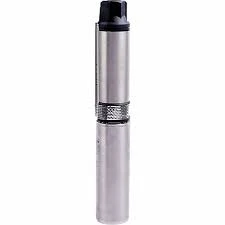Dek . 26, 2024 07:42 Back to list
Guidelines for Replacing Submersible Well Pumps Effectively and Safely
Understanding and Replacing Submersible Well Pumps
Submersible well pumps are crucial components in many residential and agricultural water systems. They are designed to pump water from underground wells directly to the surface, providing reliable access to water for various purposes, including irrigation, drinking, and household use. However, like any mechanical equipment, submersible pumps can wear out or malfunction over time. Knowing when and how to replace a submersible well pump is essential for maintaining an efficient water system.
What is a Submersible Well Pump?
A submersible well pump is a type of pump that is submerged in water. This design allows the pump to push water to the surface rather than pull it, making it extremely efficient for deep wells. Submersible pumps consist of a motor and pump assembly encased in a robust housing, which protects the components from the water's corrosive effects.
These pumps are powered by electricity, and they work by converting electrical energy into mechanical energy to create pressure that pushes water to the surface. Variations of this pump include various sizes and capacities to suit different well depths and water needs.
Signs that a Submersible Well Pump Needs Replacement
Recognizing the signs that your submersible well pump may need replacing is essential to avoid complete failure and water loss. Here are some indicators to look out for
1. Low Water Pressure If you notice a significant drop in water pressure or intermittent water flow, it may signal that your pump is struggling to operate effectively.
2. Strange Noises Unusual sounds such as grinding or excessive vibrations often indicate mechanical problems with the pump that may necessitate replacement.
3. Increased Energy Bills A pump working harder than it should can consume more electricity, resulting in higher utility bills. If you notice a sudden spike in energy costs, it might be time to evaluate your pump's efficiency.
4. Frequent Cycling If the pump turns on and off frequently without a clear demand for water, it may be failing and may require replacement.
replace submersible well pump

6. Age of the Pump Generally, submersible pumps have a lifespan of 8 to 15 years. If your pump approaches this age, it may be prudent to consider a replacement, especially if it shows any of the above signs.
How to Replace a Submersible Well Pump
If you've determined that your submersible well pump needs replacing, the process can be complex and often requires professional assistance. However, understanding the general steps can be beneficial
1. Shut Off Power and Water Supply Before beginning any work, ensure that the electricity to the pump is turned off at the circuit breaker, and stop the water supply to prevent any accidents.
2. Remove the Pump A submersible pump is typically installed in a well casing. You will need to use specialized tools to pull the pump out of the well. Be prepared for the weight of the pump, as they can be quite heavy.
3. Inspect Components Before installing a new pump, inspect all components, including the wiring and pipes, to ensure there are no other issues that need addressing.
4. Install the New Pump Carefully install the new pump, following the manufacturer’s instructions. Make sure all connections are secure and watertight.
5. Reconnect Power and Water Supply Once the pump is installed, restore the power and water supply. Check for any leaks and ensure that the pump is operating correctly.
6. Regular Maintenance After installation, regular maintenance can extend the life of your new submersible well pump. This includes checking the pressure switch, ensuring proper water levels, and periodic professional inspections.
Conclusion
Replacing a submersible well pump is an essential task that ensures reliable access to water for your home or farm. By recognizing the signs of a failing pump and understanding the replacement process, you can prevent water supply issues and maintain a consistent flow. While some DIY enthusiasts may feel comfortable undertaking the replacement themselves, consulting a professional can guarantee a more efficient and safer installation. With the right care, a new submersible well pump can serve your water needs for many years to come.
-
submersible-sump-pump-auto-drainage-for-crawlspaces
NewsAug.22,2025
-
solar-powered-stainless-steel-submersible-well-pump-setup
NewsAug.22,2025
-
stainless-steel-well-pump-flow-rate-optimization
NewsAug.22,2025
-
water-filled-submersible-pump-fish-farm-oxygenation
NewsAug.22,2025
-
submersible-pump-in-aquaculture-and-fish-farming
NewsAug.22,2025
-
deep-well-submersible-pump-for-drought-areas
NewsAug.22,2025
-
 submersible-sump-pump-auto-drainage-for-crawlspacesCrawlspaces, those narrow areas beneath homes, are prone to water accumulation due to leaks, groundwDetail
submersible-sump-pump-auto-drainage-for-crawlspacesCrawlspaces, those narrow areas beneath homes, are prone to water accumulation due to leaks, groundwDetail -
 solar-powered-stainless-steel-submersible-well-pump-setupHarnessing solar energy to power stainless steel submersible well pumps is a sustainable and coDetail
solar-powered-stainless-steel-submersible-well-pump-setupHarnessing solar energy to power stainless steel submersible well pumps is a sustainable and coDetail -
 stainless-steel-well-pump-flow-rate-optimizationIn various applications like agriculture, domestic water supply, and industrial use, the flow rate oDetail
stainless-steel-well-pump-flow-rate-optimizationIn various applications like agriculture, domestic water supply, and industrial use, the flow rate oDetail
